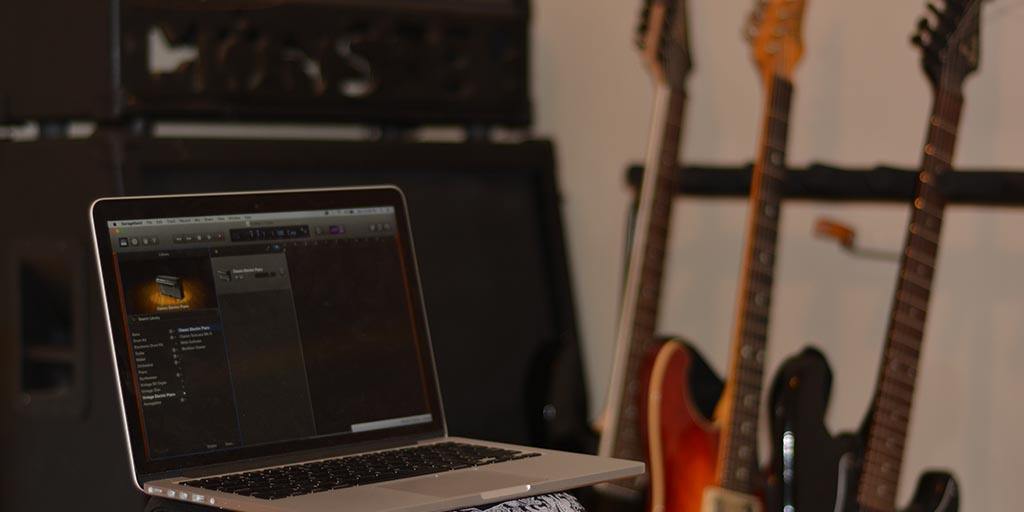The ease of creating music in 2017
 CREDIT: MITCH VOLLMER
CREDIT: MITCH VOLLMERProfessional sounding music can now be at the fingertips of anyone with the readily available softwares now available.
We are now over a month into 2017, and the art of creating, recording and publishing music is constantly improving, and has never been easier. The music industry has certainly taken a few golden steps away from the years of demo recordings onto old audiocassette tapes, constantly rewinding and overdubbing when tape grew short. Now, some ways to record music can be as easy as plugging a guitar into a computer.
“I find it easier now because we all have access to new recording gear that just lets you pop whatever you’re playing into a session on ProTools to write with, and that’s a tool that a lot of people didn’t have years ago so it definitely would have been easier to write in a large group or band but now anyone can just do it alone because we have so much access,” said Brock Phelan, current student of music industry arts (MIA) at Fanshawe.
Creating music directly from your computer is now an option for those who don’t have access to real instruments. They help to give more electronic and pre-recorded instruments than most musicians know how to play.
Nicholas Green, an independent musician, recently released his first solo EP, created entirely from the free Apple program, Garage Band.
“When I started recording I had a keyboard that had a plug-in microphone into my computer to literally record my piano playing. But when I bought my Mac, using Garage Band I realized I could create every sound I want right from the program itself, and I’ve never really needed to use anything else,” Green said.
Programs, equipment and instruments have also become materials, which no longer require thousands of dollars to obtain, as specialty stores, and unique publishers have made them readily and affordably available.
“I definitely rely on technology heavily when I’m writing and recording. I have a Scarlett interface with a NT1 RODE microphone that probably cost $600 maximum, and drum samples nowadays can even sound so realistic, that you can make a drum sample sound like a real one to the every day consumers ear,” Phelan said.
Publishing and finding a source to get people listening to your music has also become easier, with free hosting websites and apps, such as Bandcamp or Soundcloud.
“Bandcamp makes it as easy as possible to really do everything yourself, although you won’t have the major advertising or marketing behind it you can be in complete control if you want to,” Green said. Bandcamp is a website with the purpose of giving direct support to artists directly from fans. It is free to make an account, and also free to upload music for the sake of others downloading for free. When tacked on with a price, Bandcamp will charge a 15 per cent difference, allowing artists to take 85 per cent profit on their music supplied to millions of people.
“I find that often a local artist can get very caught up in the rush of online marketing, and will often just get turned into another Facebook post that people scroll past. I think for a local artist, it can actually be just as beneficial to go out and market yourself in person, and just play shows as much as possible,” Phelan said. Many other sites also help pay artists in turn for publishing their music on them. Apple Music pays its artists around 70 per cent depending on ownership and revenue, while Spotify pays its artists per stream play at an average payout of $0.004891 according to the website. Sights such as these are often only beneficial to artists with an already large social following.
“People buying your music is another story because more people are making music now more than ever thanks to technology, so supply can be much greater than demand,” Green said.
Bands and artists have now been using social media to locate other local artists to play and create music with.
“Even if you’re outside of MIA building that network of very hardworking people is beneficial because their attitude rubs off and affects you too and makes you want to try harder.”
Creating secondary media such as videos to go along with music have also become easy and popular thanks to free hosting websites such as You- Tube.
“If you’re a musician, it is 100 per cent important to have a network of other people who make and create music that push you everyday to create more and try new things that they’re trying,” Phelan said.
You can find Phelan’s band Faux Claire on Facebook at facebook.com/FauxClaire. Green’s EP can be found at his Bandcamp at thegreenroom2.bandcamp.com/album/wave-after-wave.














